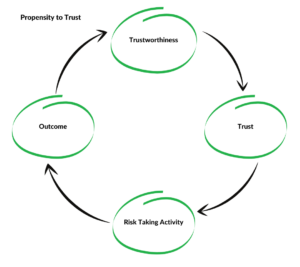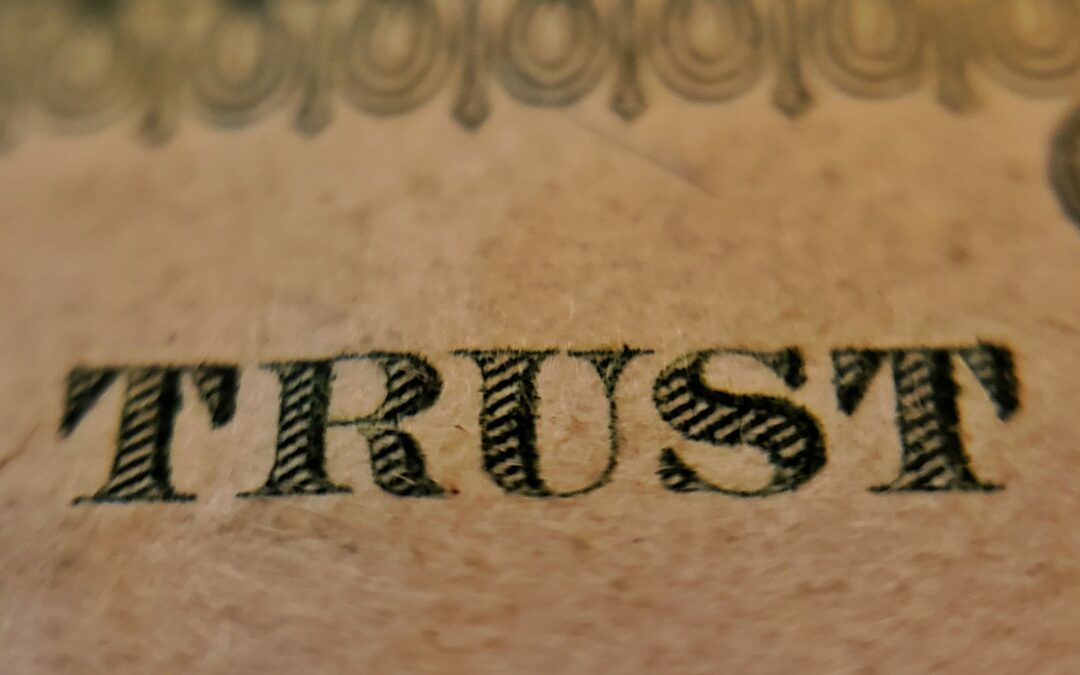It’s time to measure trust. There are many things that can’t be measured but must still be managed. Sometimes the most important data required to manage a company is unknown or unknowable. But, fortunately, data about trust doesn’t fall into either of those categories.
Importance of trust
Trust is both omnipotent and omnipresent. It touches everything and everyone. It lies at the heart of every action, every relationship and every transaction your company engages in.
It’s also the leading indicator of economic exchange. This means there is an overwhelming case for every company to measure trust because it also drives sustainability. But, if it’s so critical, why do so few companies measure it?
In a poll, 57% of respondents said they didn’t think it could be measured. A further 29% indicated they didn’t have the expertise to do so.
Clearly, many companies don’t feel they’re in a position to leverage the obvious power of trust, but that’s simply not the case.
Time to get started measuring trust
One of the first steps in managing trust (including measurement) is understanding how it can be defined and how it is created.
Trust is often considered an abstract and difficult to pin down concept. Given these perceived difficulties, many companies simply don’t prioritise or treat it with the same urgency and focus as they do other business assets.
But the benefits for those companies perceived as being trustworthy (the precursor to trust) are very significant. Trust brings real and quantifiable value to a company. That’s why trustworthiness and related metrics must be managed like other key performance indicators.
Understanding the trust process
Each of us thinks of trust in different ways, so it’s worth going back to basics to understand the trust process.
Trust is essentially built, maintained and restored through a circular process depicted in the following diagram.

Propensity to trust is often overlooked when thinking about trust and how it can best be managed.
Just as we each have a preference for different things in life, each of your stakeholders brings a unique perspective and propensity to how they trust others. This is formed by a combination of genetic characteristics and life experiences from a very early age.
It represents a tendency to interpret the words and actions of others to assign perceived trustworthiness. Perception is also influenced by context (nature of risk) and acts a bit like a filter. Some people find it easy to trust others while others less so.
Ideally, every company should attempt to gather data about each prospective stakeholder’s propensity to trust. Armed with this information, you will be better able to deploy strategies and tactics that support the important goal of achieving trust as an outcome. The quicker that can be done the better because it helps accelerate to a position of confidence and certainty within each relationship.
When a stakeholder engages with a company, particularly for the first time, they face conditions of high uncertainty which is why they assess trustworthiness.
Your perceived trustworthiness is largely responsible for the stakeholder’s decision to trust you (or not), so it is a critical step in the process. Fail here and you won’t get to a position of trust. What sort of things are stakeholders looking for? It turns out there are six (6) key areas of interest, including these:
-
-
-
- Your ability (can you do it?)
- Your integrity (will you do it?); and
- Your humanity (will you put my best interests first?)
-
-
Assuming trustworthiness is demonstrated to the stakeholder’s satisfaction and the perceived risk is not too high (all trust involves risk taking), they will decide to trust you, at least once.
The stakeholder is signalling that they’re willing to be vulnerable to you and there is an expectation you will reciprocate and not violate their trust. It’s important to note that you can’t force anyone to trust you, nor can stakeholders make you trustworthy.
“Trusting you is my decision. Proving me right is your choice.” Anonymous
Once the stakeholder has decided to trust you, they will engage in some form of risk-taking activity to consummate the exchange. For example, this could take the form of buying a product or service, agreeing to become an employee, entering a supply agreement or investing in the company.
The last step in the process involves an outcome.
This happens when the risk-taking activity concludes and the stakeholder assesses your performance against their expectations. Did you reciprocate or violate the stakeholder’s trust?
Whatever the outcome, it feeds into the company’s ongoing perceived trustworthiness and reputation. It informs the stakeholder’s future decisions about whether they should trust you again or not.
Time to measure trust today
Fortunately, companies don’t need a great deal of expertise to measure trust because the hard work has already been done for you by Trustgenie.
It uses well-researched and validated processes to accurately measure key elements of the trust process – propensity to trust, trustworthiness and trust. It also identifies strengths and weaknesses, and provides guidance on how to improve your trust performance.
It’s important at this point to make a clear distinction between measuring trust and perhaps using a ratings/review or similar service.
The latter can be used to help create a sense of trustworthiness for the benefit of prospective stakeholders. But they don’t measure trust, lack scientific backing, and are susceptible to ‘gaming’ by bad actors. A five star rating may signal satisfaction with a recent transaction/interaction but isn’t an accurate reflection of the service provider’s trustworthiness.
In order for your company to manage the expectations of an expanding ecosystem of stakeholders, it should first make trust a strategic priority. In our experience, individuals and companies implicitly know how critical trust is, but can really struggle to move from knowledge to action due to the complexities involved.
Time to manage trust
There are a number of relatively straightforward steps you can take to measure and manage trust as a strategic asset in your company:
-
-
-
- Measure trust levels. Develop an understanding, and get an initial sense, of your trust performance with various stakeholder groups. Internal and external data for different groups such as employees, customers, or investors are a helpful starting point and Trustgenie is well positioned to support your company.
- Diagnose critical gaps. Leverage data from the initial exploration phase to identify the areas within your company that indicate trust performance gaps. Trustgenie will analyse the data, generate insights and identify critical gaps that, when addressed, will have the biggest impact on achieving or improving trust.
- Prioritise. It’s probably not practical to address all performance gaps across the company at the same time. So management should prioritise focus areas by looking at the implications of each trust driver relative to the strategic priorities of the company. Insights generated by Trustgenie will assist in prioritising those gaps to bring clarity to what needs to change.
- Take Action. By focusing on the areas identified as the most critical to driving trust, companies will see over time an elevation in levels of trust and the corresponding impact on stakeholder behaviours and financial performance. Trustgenie generates Game Plans that identify the actions most likely to result in the highest uplift in performance relative to your company’s needs.
- Protect the future. Every company is constantly evolving as part of an increasingly complex ecosystem. That’s why trust across key stakeholder groups should be re-assessed on an ongoing basis to anticipate and proactively address trust issues before they lead to significant underperformance or worse. This ongoing focus on trust-building will eventually create a level of goodwill to help the company cope with any future negative trust events. It will assist avoid reportable material risks.
-
-
By following these steps, companies can put themselves in a position to make trust a strategic asset rather than a potentially material risk should problems arise. It’s time to measure trust today.
What do you think?
If you missed it, you can check out an earlier post Why Trust Matters in Business.
When performed with the right intent and a high degree of execution, your company’s actions can earn trust with its stakeholder groups. Trust is a strong differentiator and a dominant driver of future business profit and growth.
We’ve made trust tangible with our Trustgenie service—helping companies measure, manage, and improve their trust performance to increase revenue, reduce costs, mitigate risks and protect reputations.
If your company is ready to make trust its superpower, Trustgenie can help.

